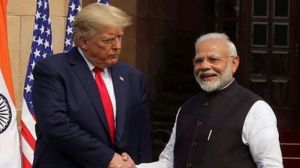A strange exile
Narasimha Rao has strategically returned to the Congress pantheon.
A democracy cannot master the art of the party faithful,any party faithful,sitting in a circle,nervously watching who stays and who falls. Not long ago,the communist dictatorships would go through the macabre routine of who survived the demise or disgrace of a supreme leader and who didnt. Accordingly,the party line would change. A party line in a democracy tends to be constructed on at least a semblance of consensus,and an individuals exit rarely overhauls it overnight. Thats the rule.P.V. Narasimha Rao seemed the exception a giant,apparently forgotten readily by design. As prime minister for a half-decade,he had the Congress party in his grip,till it all slipped away,culminating in the partys loss of power. In the eight years from 1996 to 2004 that the Congress was out of direct power or in the opposition,Rao had become a pariah. In December of the year the party returned to power,Rao passed away and,over the next six years,the memory and mention of him drew a blank from the Congress,so much so that his picture didnt figure in the pantheon of Congress PMs. Six Decembers later,Rao is back,and his legacy reclaimed overnight.Even as one might dismiss it all as a political expedient to rescue the Congresss beleaguered party and government in Andhra Pradesh,where its been in a free-fall post-YSR,can the calculated retrieval of Rao be placed at all in a larger pattern of how reputations sink and rise with the circles history weaves around politics? From the evidence,the Congress only senses the need to rapidly fill the vacuum left by YSR and thwart Jaganmohan Reddy as well as Chandrababu Naidu. Lost in the midst of possible motives,however,is the simple fact that Rao has been officially remembered on his death anniversary. Sincerity is another matter. After all,his legacy is not a mere footnote in Indias history.





- 01
- 02
- 03
- 04
- 05








![Kadapa, [Andhra Pradesh], 27 May (ANI): Andhra Pradesh Chief Minister N Chandrababu Naidu and state Minister Nara Lokesh in conversation during the Telugu Desam Party's (TDP) annual three-day Mahanadu conclave, in Kadapa on Tuesday. (ANI Photo)](https://images.indianexpress.com/2025/05/tdp.jpg?w=300)

















